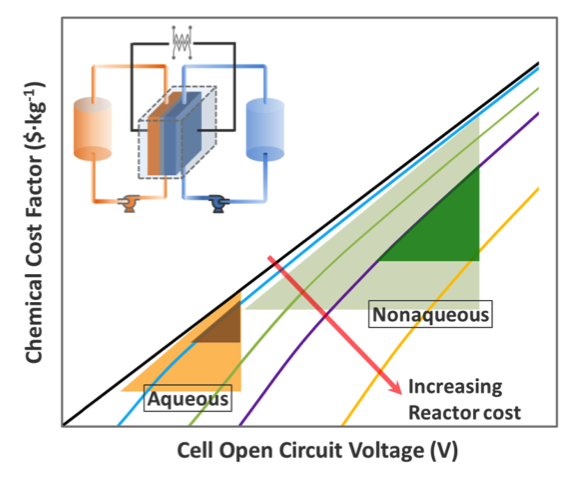
Scientific Achievement
- First comprehensive determination of materials to system level performance and cost for nonaqueous and aqueous flow batteries for future and existing chemistries
- Analysis closes the gap in understanding across a range of electrochemical energy storage technologies between the observed price today and projected future values
- Materials level targets are defined as a guide to researchers for a pathway to reach long term cost goals
Significance and Impact
- All battery technologies, including lithium-ion and vanadium redox, are found to reach cost-effective levels when high manufacturing volumes are considered
- New material approaches are likely necessary to surpass existing technologies to reach long term cost goals
- Both aqueous and nonaqueous flow batteries are viable pathways for scientists and engineers to follow
Research Details
- Analysis covers nonaqueous and aqueous flow batteries (vanadium, tailored molecule, etc.), enclosed batteries (Lead-acid, Li-ion, etc.), and hybrid flow batteries (zinc-bromine, lithium metal polysulfide, etc.)
- Breakdowns for battery price are given for 2014 as well as a chosen future state represented by an annual production volume of 10 GWh/year
Work performed at United Technologies Research Center (JCESR Collaborator), Argonne National Laboratory (JCESR managing partner), and Massachusetts Institute of Technology (JCESR Collaborator) R.M.Darling, K.G. Gallagher, J.A. Kowalksi, S. Ha, and F. Brushett, Energy & Environmental Science, 2014.
DOI: 10.1039/C4EE02158D

